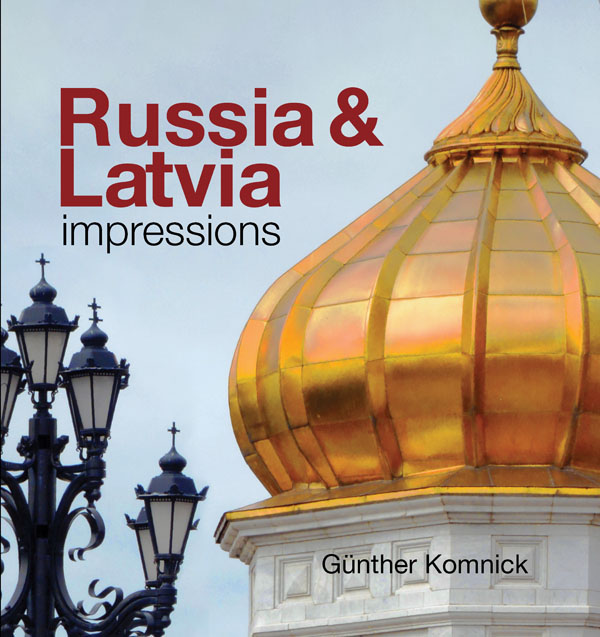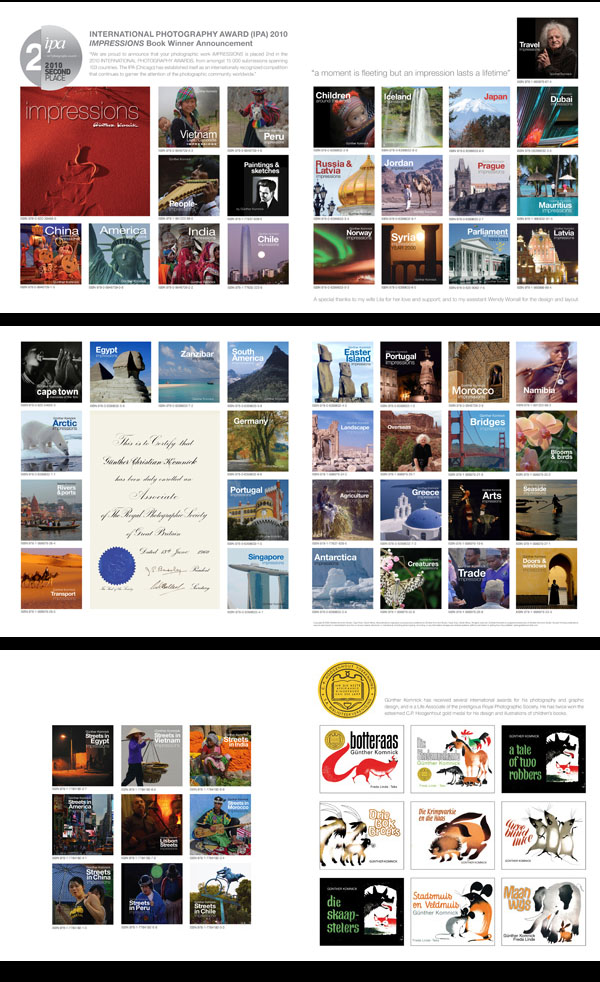Dedicated to my loving wife, Lila

Surely there are few countries which have had such an impact on the world as has Russia. And, significantly, G√ľnther Komnick has included images of Latvia in this photographic homage to two closely associated cultures. While Russia occupies the greater part of the volume, the contrasts between the two are telling.
Russia for centuries wracked by tyrannical rulers from Ivan the Terrible to Joseph Stalin, has also produced far-sighted and enlightened despots such as Peter the Great and Catherine the Great. St Petersburg, a remarkable achievement realised at a huge cost in human lives, is a monument to its founder, the vision of one man who chose to use his power for something enduring and resplendent with history, even though that history was relatively short.
Russia, a land that brought the greatest failed experiment in social engineering to the world in the form of Communism, holds many lessons for humanity. These lessons have been brought to use through the writings of its inimitable authors such as Tolstoy, Dostoyevsky (who made St Petersburg famous as a lived experience in his novels), Gogol, Turgenev, Lermontov, Chekov… the list is endless and represents just one aspect of Russia's inestimable contribution to world culture.
As a photographic homage, we see the evocative examples of Russia's architecture and fleeting images of a people seemingly undaunted by a past characterised by drama, poverty, struggle and endurance. It always remains a mystery what remains of the human spirit after being subjugated by an all-encompassing ideology. And, surprisingly the monasteries and churches have survived seven decades of state-sanctioned atheism.
For this reason too it would seem that Komnick points his camera towards the faces of a new Russia, part of a globalised world and toward the churches. They have survived the ravages of crushing, systemic brutality and arrogance, even though the churches depicted here also represented the power of the tsarist state before 1917. The continuity of culture that the churches epitomise is poetically captured in these images, along with the images of various generations going about their daily activities.
It is the context of people's lives that Komnick brings to the fore so deftly in all his books in which humans are central. People do not live in isolation of each other, in isolation of geography or of their history. Hence we always see studies of faces and activities to convey the inner being dwelling within their mortality. So too the extravagant images of palaces, statues of leaping horses, fountains and art galleries illustrate the achievements of previous generations among which a new generation forges a home. Modernity and tradition seem to flourish effortlessly side by side in this heart-warming and poetic tribute to an ancient land.
Dr Wilhelm Snyman, Cape Town, 2017
